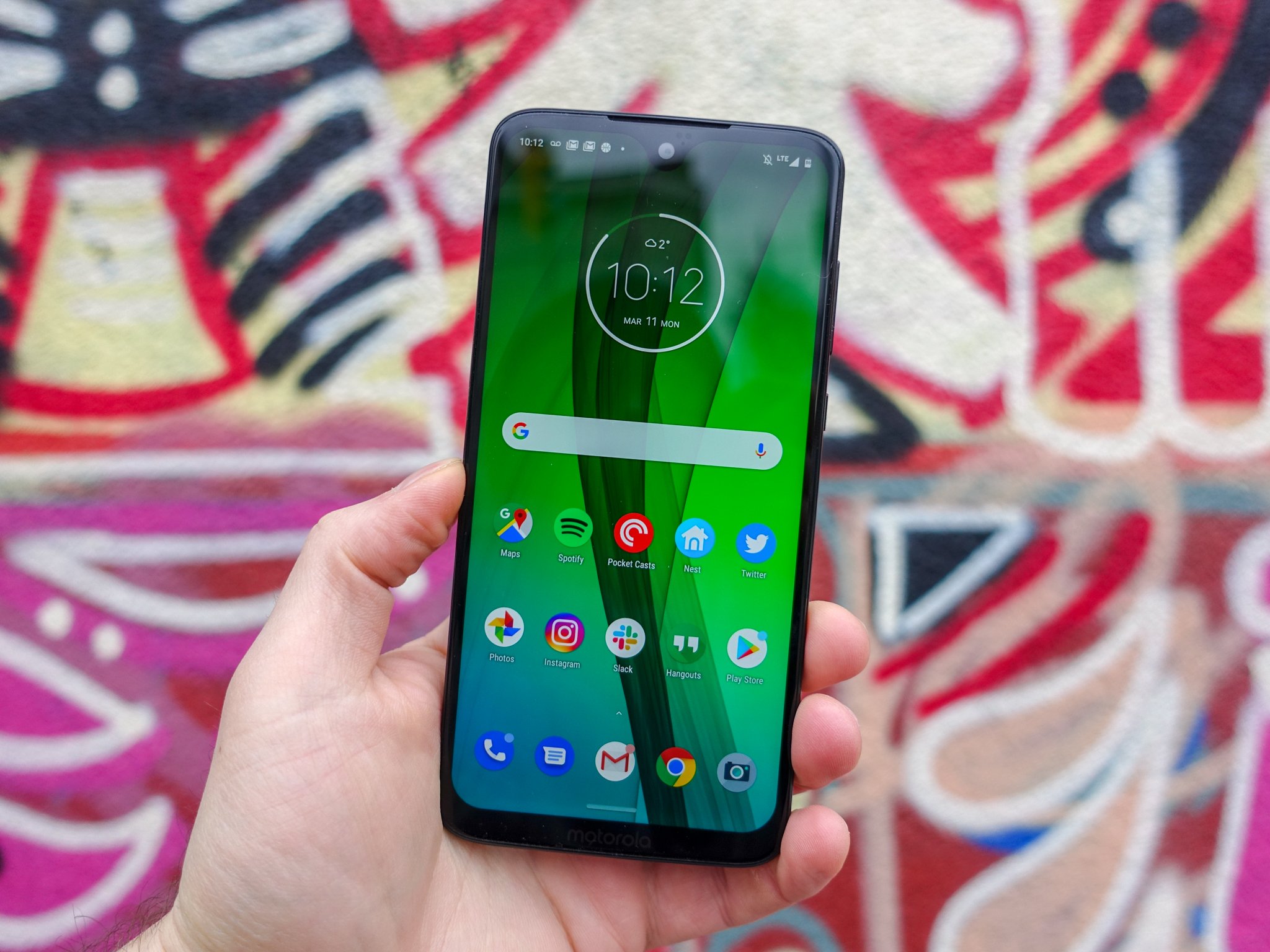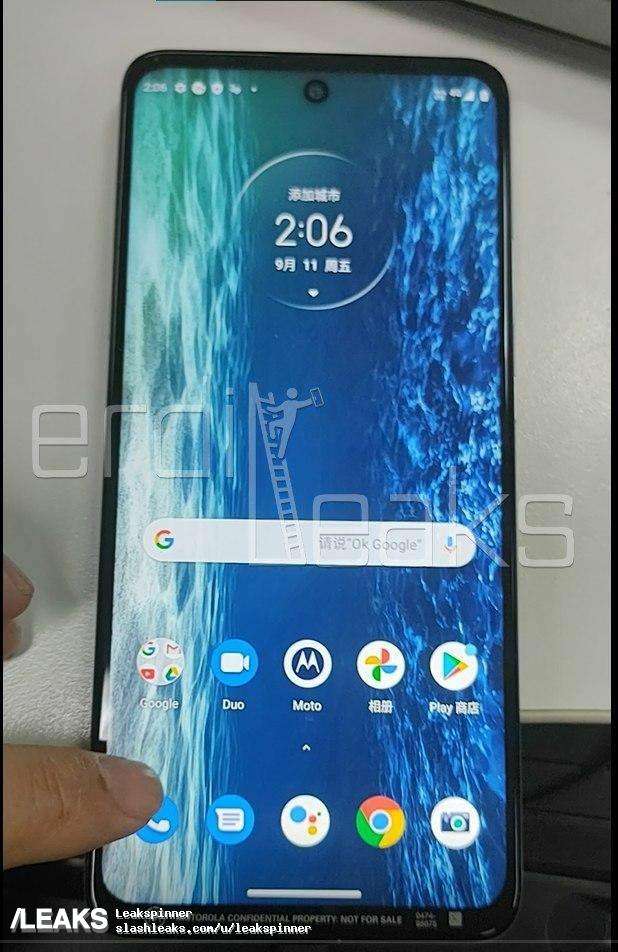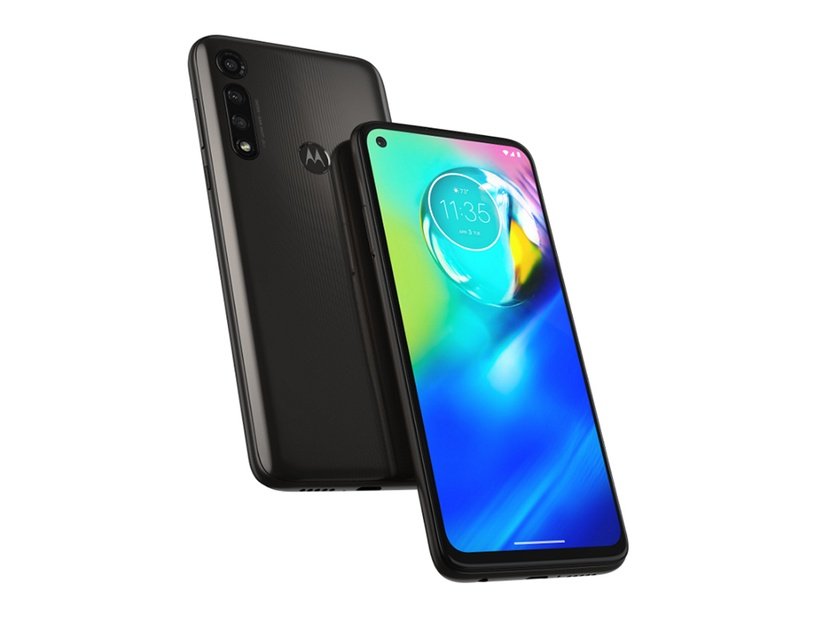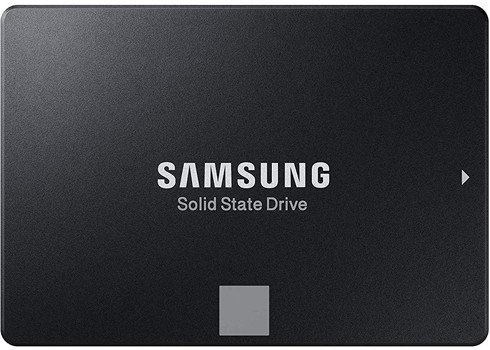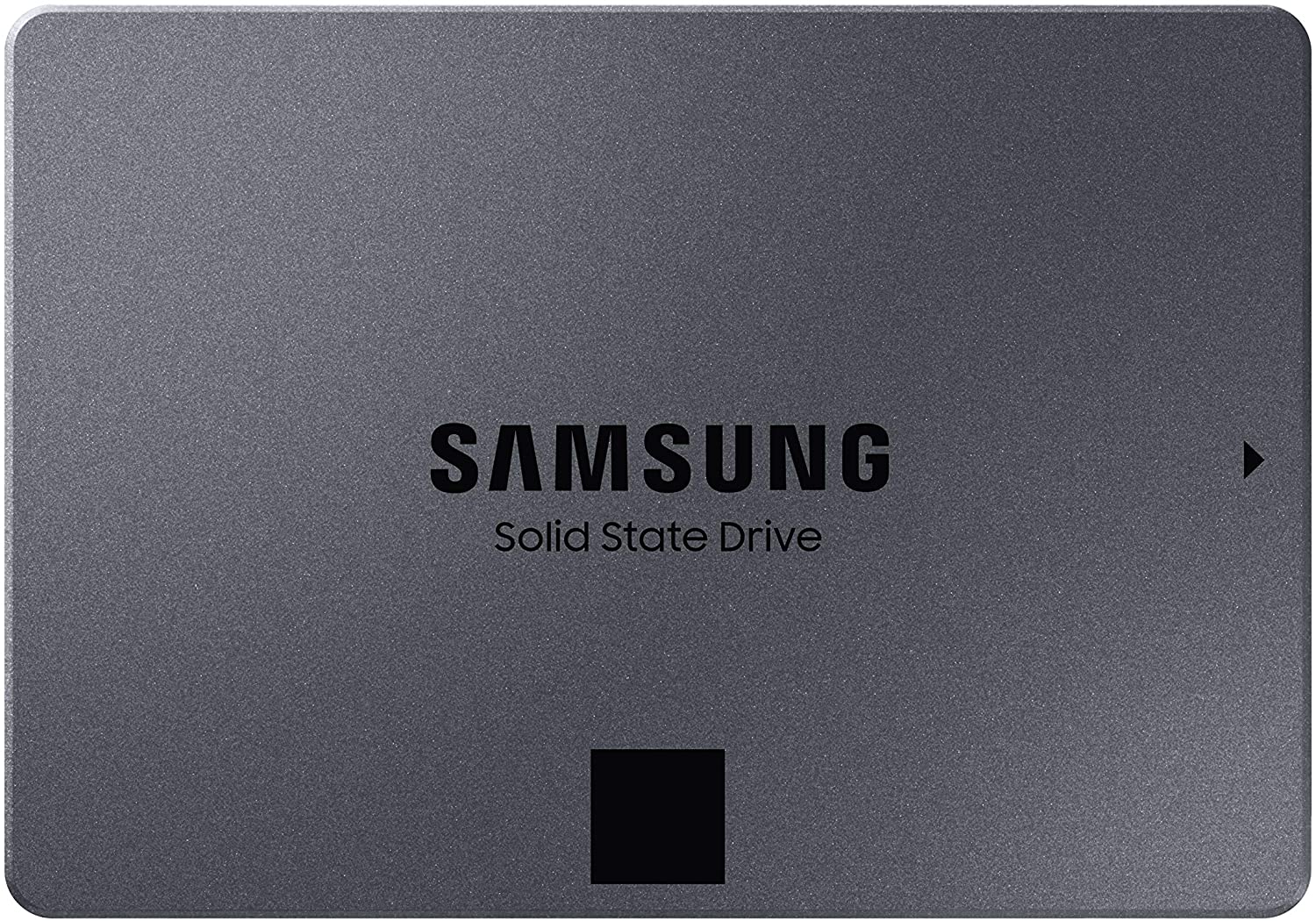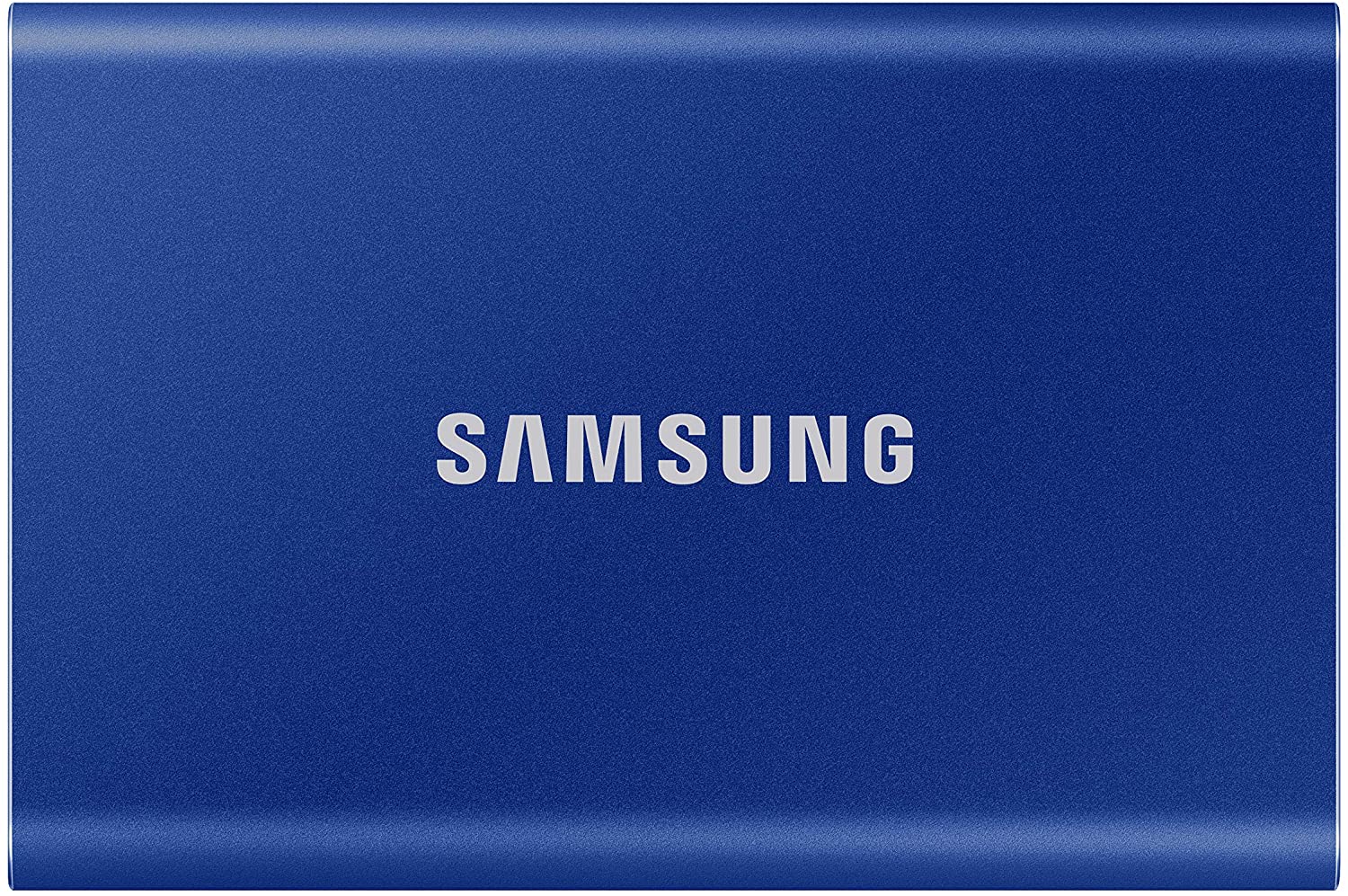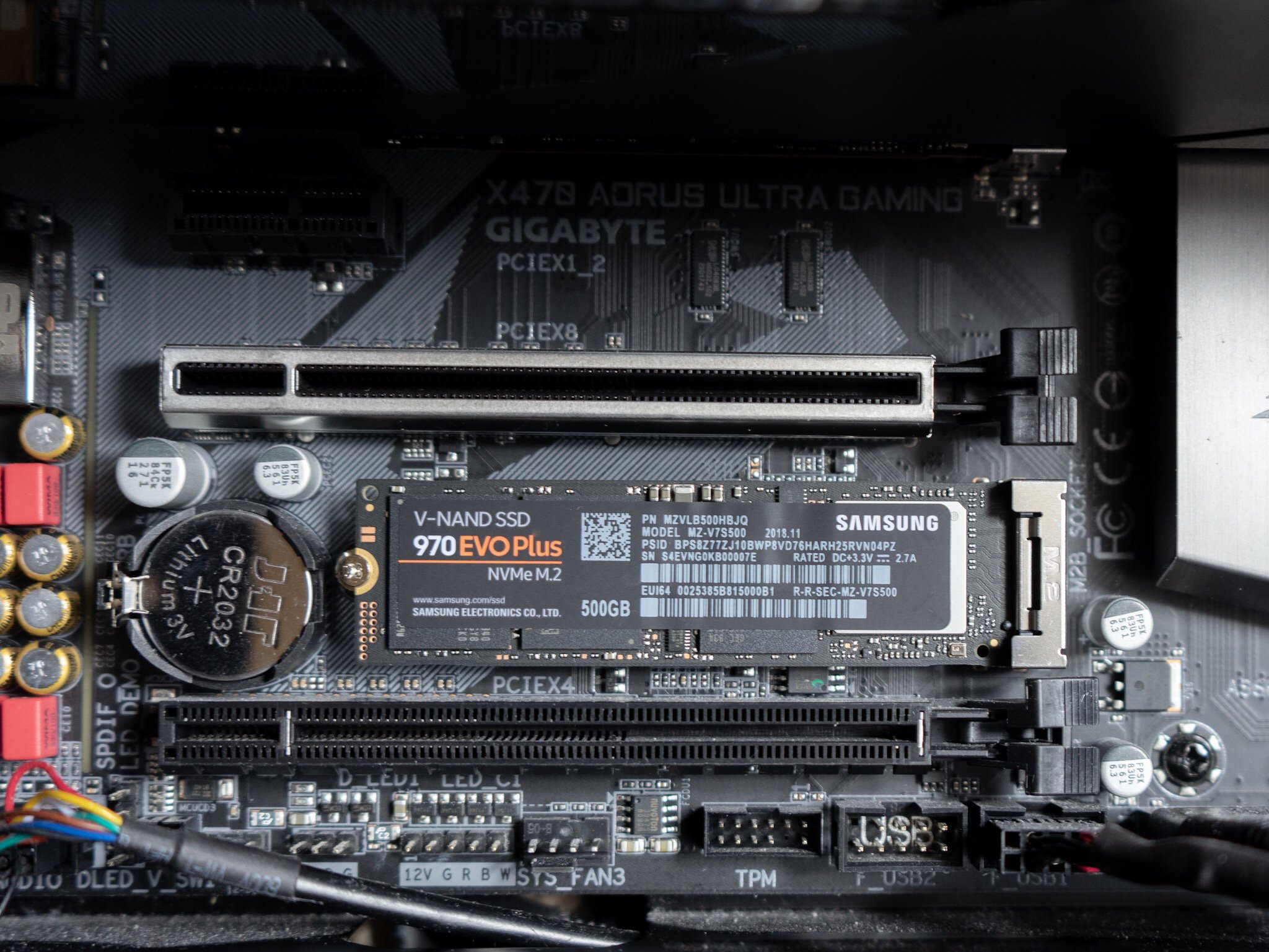
Saturday 31 October 2020
Developers test app that can diagnose COVID by analyzing a cough

Developers claim that this app can diagnose COVID by analyzing coughs

Motorola's next 5G budget phone gets leaked with the new Snapdragon 750G
The phone will reportedly have a 6.6" display and a 5,000 mAh battery.
What you need to know
- A recently leaked photo shows off the Moto G 5G with a Snapdragon 750G SoC.
- This could be one of the first phones to use Qualcomm's new Snapdragon 750G.
- The phone will reportedly have a 6.66-inch display, 6GB of RAM, 128GB of storage, and a 5,000 mAh battery.
A recently leaked photo by Slashleaks has revealed the Moto G 5G, Motorola's next 5G budget phone with Qualcomm's brand-new Snapdragon 750G chipset. This could be one of the first smartphones to carry the Snapdragon 750G SoC, following the likes of Xiaomi and Samsung.
According to XDA-Developers, the Motorola Moto G 5G will have a fairly competitive spec sheet, especially as a budget phone. In addition to the Snapdragon 750G processor, the phone is rumored to have a 6.66-inch display with a 2400x1800 resolution and a 60Hz refresh rate, 6GB of RAM, 128GB of internal storage, as well as a gigantic 5,000 mAh battery.
The phone will also have 3 cameras on the back including a 48MP primary sensor. On the front, there's a minimal hole-punch camera, which is a 16MP sensor.
Interestingly enough, the Moto G 5G will also have a Google Assistant button on the side much like LG's recent devices. However, it seems to be missing on the Verizon-variant intended for the US market.
With all these specs and features in mind, the Moto G 5G seems to be a relatively fully-featured phone. Judging from the leaked photo, it seems to have reduced bezels and a more modern design compared to previous devices in the Moto G series. While it will likely miss out on wireless charging, it doesn't miss out on essentials such as NFC and microSD support.
Although certain details such as the release date and price tag are currently unknown, it's good to see more budget 5G phones coming out of the woodworks. With the ongoing pandemic and economic climate, well-worth budget phones are more imperative than ever before.
Moto G Power
The Moto G Power is one of the best budget phones you can get in the US. With a 6.4" display, 4GB of RAM, a triple camera system, and a crazy 3-day battery life, it's one of our favorite recommendations under $200.
Here's a great holiday gift idea for friends and family purchasing a 5G iPhone 12 series handset
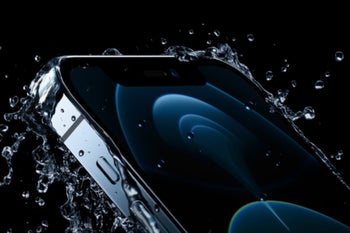
5 Android apps you shouldn’t miss this week – Android Apps Weekly

Welcome to the 352nd edition of Android Apps Weekly! Here are the big headlines from the last week:
- Facebook is the latest company in the game streaming space. It wants to offer mobile game streaming through its official app and on the website. Some of the launch titles include Asphalt 9: Legends, WWE SuperCard, and PGA Golf Tour Shootout. The feature is currently rolling out regionally across the US and there are some restrictions as well. For instance, you need a good Internet connection in order to use it. More areas are coming soon as well as more games.
- Netflix is potentially experimenting with an audio-only mode. XDA-Developers found evidence of such a mode in a recent APK teardown. It may seem silly since Netflix has a bunch of TV shows and movies. However, the service also has a bunch of comedy stand-ups and documentaries that might work pretty well in an audio-only mode. We’ll keep you updated if we hear more.
- Google Play is testing out a comparison feature for apps. It’s only available for media players right now and lets you compare things like resolution support, whether or not it streams, and whether or not it works offline. It only works in version 22.4.28 of the Play Store and even if you have it, Google probably needs to flip a switch for you to see it. Hit the link to learn more details.
- Sony revamped its PlayStation app just in time for the PS5 launch. The new version of the app includes a dedicated store, the ability to voice chat (similar to the Xbox app), and remote control capabilities for the upcoming PS5. You can also answer and send messages to other players, launch games, and manage your storage. It’s actually a fairly huge update and brings it more in line with Xbox’s already excellent mobile app.
- Apple is likely working on a search engine to rival Google. It’s only a rumor, but one with a lot of steam behind it. Google is in the middle of an antitrust lawsuit with the US government and that may bode poorly for Apple. Additionally, it’s likely the company doesn’t want to rely on Google for its search functionality. In any case, you can hit the link to learn more about it.
Dragonscapes Adventure
Price: Free to play
Dragonscapes Adventure is a building simulator with a collector element. Players start on a remote island and build up their little ecosystem, collect various dragons, and merge dragons to make new dragons. It’s not the most exciting game ever, but you do get to explore your island a bit and see some stuff along with the game’s main mechanics. The dragons are cutesy and that appeals to some gamers. Additionally, the graphics are simple, but colorful so the game is pleasing to look at. It won’t blow your mind, but it should serve as a decent time waster.
Noobly
Price: Free
Noobly is a social app for gamers. You can browse profiles and see what other people play. From there, you invite them to play those games with you. It’s not promoted as a dating app although it probably could be for some people. In any case, it uses a Tinder-style flick mechanic as it shows you profiles. You swipe ones away that you don’t think you’ll like. You put things on your profile like interests, games you play, and other hobbies. It’s in early access beta, so there aren’t a ton of people on the service yet. If it pops off, it could be a good place for gamers to hang out.
Sumikkogurashi Farm
Price: Free to play
Sumikkogurashi Farm is easily the most difficult name to type in the history of Android Apps Weekly. This one is a farming simulator is similar in scope to games like FarmVille. You grow crops to earn money and XP, level yourself up, unlock more stuff, and grow more things. There is also a character customization element, monthly events, and some other small additions to the game to keep things interesting. It’s a relaxing game without a ton of player input, but a lot of players seem to enjoy the game’s simplicity. It’s a free to play game, but you don’t have to buy anything to enjoy yourself.

SideSqueeze+
Price: Free / Up to $9.99
SideSqueeze+ is an app mostly for Samsung Galaxy phone owners. It gives devices the ability to squeeze-to-launch apps similar to the functionality we used to see on earlier Pixel and HTC devices. The app needs calibration, but it worked pretty well on our Galaxy Note 20 Ultra. The app doesn’t work on every device, but it found a home among Nexus 5 owners who miss older Pixel’s ability to squeeze to active Google Assistant. There are even S-Pen features if you want to try it with your Galaxy Note device. It is in early access, though, so expect some bugs, glitches, and compatibility issues here and there.

Spooky Wars
Price: Free to play
Spooky Wars is a hybird of several game genres, including tower defense, strategy, deck building, and dueling mechanics. Players can collect up to 50 cards with upgrades available to make them stronger. There are also three different game modes, social elements, leaderboards, and one versus one PvP. The game play is fine and reminiscent (but not identical to) games like Badlander Brawl. The only real downside is the game operated on a closed beta for a while and all of those players got to keep their game saves upon final release. Thus, day one players began the game at a serious disadvantage to the beta players. However, we expect that advantage to dissolve over time.
Thank you for reading! Check these out too:
- 10 best farming simulators for Android
- 10 best dating apps for Android
- 15 best simulation games for Android
- 10 best customization apps for Android
- 10 best online multiplayer PvP games for Android
If we missed any big Android apps or games news, updates, or releases, tell us about them in the comments!
These are the best Samsung solid-state drives you can buy
Choosing the right solid-state drive (SSD) for your PC is vital, especially if it's to be the drive that contains the operating system. SATA SSDs took storage to the next level compared to mechanical drives, but NVMe PCIe SSDs like the Samsung 970 EVO Plus catapult flash storage to a new dimension with fantastic read and write speeds at a reasonable price. It's the best SSD in terms of performance and value for your PC. These are the best Samsungs SSDs.
Best Value SSD
Samsung 970 EVO Plus
Staff pick
Most modern motherboards have an M.2 slot, which is required for this SSD, but if you manage to install this module, you'll be enjoying read and write speeds of 3500 MB/s and 3300 MB/s, respectively. It's insanely fast, and the included five-year warranty only adds to the list of factors that make you disbelieve the price. Like most SSDs available, the higher the capacity, the more you'll be paying out, but it's worth it.
Best SATA SSD
Samsung 860 EVO
The 860 EVO is Samsung's best-selling solid-state drive (SSD) family, and rightfully so since you get so much for your money. There's a 5-year warranty on each 860 EVO, and new owners will be able to enjoy up to 550MB/s read, and 520MB/s write speeds. That's not bad for a SATA interface.
Best NVMe SSD
Samsung 970 PRO
To say the Samsung 970 PRO is a fast NVMe PCIe SSD would be an understatement. With read and write speeds of 3,500MB/s and 2,500MB/s, respectively, it's a force to be reckoned with. Ideal for loading the OS, games, and software, the 970 PRO from Samsung will also last longer with a 5-year limited warranty and a solid endurance rating of 1,200 TBW. (That means you can write 1,200 TBs worth of data to the drive before encountering issues.)
Best Budget SSD
Samsung 870 QVO
The QVO is an odd bag from Samsung. You get the same 560MB/s, and 530MB/s read and write speeds you'd find in the 860 EVO, but there are a few drawbacks that make this more budget orientated. You'll also see just three on the warranty compared to the 860 EVO, but the endurance rating is identical, making it a solid overall choice on a budget.
Best Portable SSD
Samsung T7
The Samsung T7 is an external, portable SSD that has a robust, metal enclosure to protect it from the potential shatter damage. Although it is a SATA SSD, the T7 has read and write speeds of 1,050MB/s and 1,000MB/s, respectively, and the portability allows you to take it with you anywhere you may go, making it particularly helpful in business circumstances or when you need to transfer some data fast.
These are the best Samsung SSDs in 2020
Solid state drives (SSDs) can be just the thing you need when it comes to storing data. If we were to make a single outright recommendation, it would be the Samsung 970 EVO Plus, offering immense value and high levels of performance, with a strong warranty to back it. So long as you have a spare M.2 slot, this SSD will deliver read and write speeds up to 3,500MB/s and 3,300MB/s, respectively.
The rather enticing price of the Samsung 970 EVO PLUS is for the 512GB version. If you need more storage, you'll either have to pay out considerably or plan ahead and pick up more budget-friendly options like a mechanical drive. If you want an SSD-only setup, throwing in a 1TB Samsung 870 QVO would add considerable storage capacity without destroying your available budget.
If you're in the market for portability, the Samsung T7 is a fantastic choice. You can easily connect the portable drive to any Android phone and transfer data from your phone to the SSD. Although devices like the Galaxy Note 20 come with 256GB of storage by default, it's good practice to back up the data on your phone to an external source, and the T7 allows you to do that with ease.
Here's where to find Clorox wipes in stock online right now
2020 has been quite the year so far. Store shelves have become routinely empty of certain essential items that one might need while they're staying at home for weeks at a time. If you've been trying to get your hands on disinfecting wipes without searching every local store within a 20-mile radius, you've come to the right place.
Where to find Clorox wipes in stock
The Best
- Instacart: shop disinfecting wipes
- Amazon: shop disinfecting wipes
- Staples: shop disinfecting wipes
- Target: shop disinfecting wipes
The Rest
- Walmart: shop disinfecting wipes
- CVS: shop disinfecting wipes
- Office Depot: shop disinfecting wipes
- Home Depot: shop disinfecting wipes
- Walgreens: shop disinfecting wipes
The key to finding wipes in stock is to keep looking. Stock levels are always changing, and while they may be unavailable at some places right now, that doesn't mean they won't be back before the day is out.
How to find disinfecting wipes in stock
Amazon is pretty well-known for having just about anything whenever you want it, but that hasn't exactly been the case during 2020. Lately finding clorox wipes in stock seemed like a miracle, and that applies to other online retailers as well. With so many places to search, finding stock is inevitable, but it can take some time and effort too.
We've searched sites like Walmart, Home Depot, Staples, Lowe's and more, but some are stocking this item a bit quicker than others. Many times your best bet is to consider local in-store items that you can purchase online. Buying online for curbside pickup or even with grocery delivery services like Instacart could mean the difference between getting your order today and receiving it a few weeks from now.
Best stores to shop for Clorox wipes
Disinfecting wipes at Target
Target restocks quickly, has name-brand and store-brand options, and even lets you shop for curbside pickup at a local store near you. Use a Target RedCard for 5% off the purchase.
Cleaning wipes at Amazon
Wipes are becoming a bit easier to find in stock at Amazon lately, though you'll have the best chances by shopping Amazon Fresh.
Lysol wipes at Staples
Surprisingly, disinfecting wipes pop up in stock at Staples more than many other online retailers. This store not only stocks up often but also offers a lot of different options to keep your eye on.
Clorox wipes at Instacart
Instacart lets you search local stores in your area for disinfecting wipes, from Publix and Aldi to Costco, Target, and more. Delivery or pick-up is an option here, and usually you'll get the best results by choosing store pick-up.
1. ExpressVPN: The best VPN available right now
This is our top pick for anyone looking to get started with a VPN. It offers a great mix of speed, reliability, outstanding customer service, and affordability. There is a 30-day money-back guarantee, so give it a shot today.
Where to find affordable disinfecting wipes
There have been numerous tales of sellers price-gounging others on essential items like clorox wipes and toilet paper during the past few months, and that's something you'll want to watch out for online as well. Plenty of stores allow third-party sellers to offer items on their sites, so you might find single packs of disinfecting wipes for as much as $20 each on sites like Newegg or Sears. These packs don't include many wipes either, so it's something to certainly keep an eye out for when ordering.
Amazon's Fresh grocery service offers some of the best prices, but it's also dealing with some of the highest traffic currently of all the stores, meaning it will be even harder to find Clorox wipes available there. With that in mind, Instacart becomes the next best option. You'll see items available at stores in your area and at similar prices as you'd see in-store. Instacart lets you shop at various retailers including Target, Publix, Aldis, Costco, CVS, Kroeger, PetSmart, and more for grocery delivery or store pickup.
Target is a great option too, especially if you have a Target RedCard. The store is one of the quickest to restock these items and gives you the ability to have your order shipped to your home or picked up at the store. With a Target RedCard, you'll save 5% off your order and score free 2-day shipping on eligible items as well. There's a debit card option that's completely free and doesn't have any fees attached, unlike the credit card version.
13 new and notable Android apps and live wallpapers from the last week including Android TV Data Saver, Starlink, and TVision (10/24/20 - 10/31/20)
Welcome to the roundup of the best new Android applications and live wallpapers that went live in the Play Store or were spotted by us in the previous week or so. Today I have a data-saving app for Android TV, the new connection app for Starlink's (terrestrial internet) beta, and a TV service app from T-Mobile. So without further ado, here are all of the new and notable Android apps released on the Play Store in the last week.
Read More13 new and notable Android apps and live wallpapers from the last week including Android TV Data Saver, Starlink, and TVision (10/24/20 - 10/31/20) was written by the awesome team at Android Police.
The Core i5 Pixel Slate's flash storage is failing for several users
It's no secret that Google's Pixel Slate has been a colossal disaster since it launched in late 2018. Google was betting big on making a compelling tablet powered by Chrome OS, but the software quirks, egregious price, and awkward tablet experience made it a painful product to use. The good news is that Google fixed most of the weird software bugs with updates, resulting in a much-improved user experience that doesn't nearly impede your workflow as much as it did before.
Read MoreThe Core i5 Pixel Slate's flash storage is failing for several users was written by the awesome team at Android Police.
Samsung Redesigns Galaxy Store, Puts More Focus on Gaming
DJI Pocket 2 review: Better than the original in so many ways
When the DJI Osmo Pocket launched in 2018, it quickly became one of my favorite gadgets. Its tiny size and powerful features make it an essential part of my gear bag. It allows me to get high-quality, ultra-smooth video with the same camera sensor found on a prosumer DJI drone.
Needless to say, I was super excited to get my hands on the follow-up for this DJI Pocket 2 review. DJI made a lot of substantial upgrades to the Pocket 2 compared to the original, and I couldn’t wait to put them to the test.
DJI Pocket 2 review: What is it?

The DJI Pocket 2, like the original Osmo Pocket, is an all-in-one three-axis gimbal camera. The permanently-attached camera sensor on top of the device is incredibly similar to what you’d find on DJI’s line of market-leading drones, such as those in the Mavic series.
Because it has three-axis motorized stabilization, you can capture buttery smooth video footage. Whether you’re walking, running, hiking, or just using a selfie stick, you won’t see many shakes or wobbles while you record.
Related: The best smartphone gimbals you can get right now
DJI also has a line of smartphone gimbals, the newest of which is the DJI OM 4. This achieves similar results as the Pocket 2 but uses your smartphone for video capturing. The advantage with that setup is that your smartphone’s multiple cameras might be better for your needs than the Pocket 2’s setup. However, the primary disadvantage is that a smartphone gimbal will take up quite a bit of space in your bag. The Pocket 2, on the other hand, will literally fit in your pocket.
What’s new since the DJI Osmo Pocket?

DJI crammed a ton of new features into the DJI Pocket 2. Not only did it upgrade some of the internal specs — including the all-important camera sensor — but it also added new hardware elements. There are also more accessories included with the base-level package.
Below, you’ll find a table with the major differences between the DJI Pocket 2 and the 2018 model. Please note that these are not all the differences, just the major ones.
| DJI Pocket 2 | DJI Osmo Pocket | |
|---|---|---|
| Camera | 1/1.7” CMOS Effective pixels: 64 MP Max image: 9,216 x 6,912 |
1/2.3” CMOS Effective pixels: 12 MP Max image: 4,000 x 3,000 |
| Lens | 93-degree FoV ƒ/1.8 Format equivalent: 20mm |
80-degree FoV ƒ/2.0 Format equivalent: 26mm |
| HDR Support | Coming soon: 2.7K: 2,720×1,530 24/25/30fps FHD: 1,920×1,080 24/25/30fps |
Not supported |
| Slow motion | 1080p/120fps (for 4x) 1080p/240fps (for 8x) |
1080p/120fps (for 4x) |
| Digital zoom | 4x at 1080p 3x at 2.7K 2x at 4K |
Not supported |
| Livestreaming | YouTube RTMP (Requires accessory) |
Not supported |
| Audio | Quad-mic array | Dual-mics |
| Quick-start button | Yes, on side of device | Not supported |
| Dimensions and weight | 124.7 x 38.1 x 30mm 117g |
121.9 x 36.9 x 28.6mm 116g |
| In-box contents | Gimbal Case 2.0 USB-C connector Lightning connector USB-C cable Wrist strap Tripod mount adapter Control stick adapter |
Gimbal Case USB-C connector Lightning connector USB-C cable Wrist strap |
Who is this device for?

As with the original Osmo Pocket, the DJI Pocket 2 is primarily geared towards vloggers and other content creators. For novices, the Pocket 2 could be the only gear you need to get started on YouTube. It has a huge camera sensor and a versatile set of features. It’s easy enough for anyone to use, and, of course, is incredibly small.
Related: The best cameras for beginners
The Pocket 2 is not going to replace a DSLR or mirrorless camera for professional videographers who already have tons of gear. However, its tiny size makes it ideal for travel vlogging or for outdoor activities such as hiking. Basically, any shoot in which lugging a huge gear bag would be impractical is ideal for the Pocket 2.
Outside of content creation, the DJI Pocket 2 could also be great for people who simply enjoy filming their day-to-day lives. If you love recording videos of your kids, for example, this device could get you better results than what’s possible with your smartphone camera.
DJI Pocket 2 review: How to use it

There are two basic ways to use the DJI Pocket 2: on its own or in tandem with a smartphone. Almost all the features of the device can be accessed without using a smartphone.
However, take care to note that you must perform an initial setup procedure using the DJI Mimo smartphone app. This is not optional and cannot be done with a computer. When you take the Pocket 2 out of the box, it will only work on its own five times before it stops functioning. Physically attaching it to an iPhone or Android phone equipped with a USB-C port is the only way to continue use. Once registered, you can use the Pocket 2 without a smartphone as much as you wish.
DJI Pocket 2 on its own

With the original Osmo Pocket, you would start it up by holding down the multi-function button (MFB). The DJI logo would appear on the 1-inch display while it loads and then the gimbal would be ready.
With the Pocket 2, there’s a brand new button on the side that allows you to perform a quick-start. You hold down this button for a second, and then the screen lights up. The gimbal aligns itself and you are instantly ready to record.



With the Pocket 2 on its own, you can see what you are recording on the touchscreen display. Using swipes and taps, you can change settings, enter different recording modes, view what you’ve recorded, etc. You can access and tweak nearly all the features of the Pocket 2 from here — no smartphone required.
DJI Pocket 2 with a smartphone
Inside the box, you’ll find three adapters for the Pocket 2: a Lightning adapter for iPhones, a USB-C adapter for Android phones, and a control stick adapter. You can only use one of these adapters at a time, but they are hot-swappable.
With the appropriate adapter connected to the Pocket 2, you can then attach the two together. Check out the photos in this article to see how it looks.
With the two connected, your phone should automatically launch the DJI Mimo app. Once configured, you can use your phone as a viewfinder, which is a huge upgrade over the 1-inch display of the Pocket 2 itself. You can also enter a few modes that the Pocket 2 can’t perform on its own.

The two biggest modes exclusive to smartphone usage are Story Mode and Livestream Mode. Story Mode is one of DJI’s most popular features. It allows you to create a quick-cut compilation of short clips set to music. You can then share your Story on social media. Check out an example below. The whole thing took about three minutes total: a minute to film, a minute for Mimo to create the edit, and then a minute to share.
The other major smartphone-exclusive feature of the Pocket 2 is Livestream Mode. This is something that is unavailable on the original Osmo Pocket. With the Pocket 2 attached to your phone, you can live stream to YouTube, Facebook, or RTMP. However, for this to work you must use the Do-It-All Handle accessory ($99), which doesn’t come with the Pocket 2. You’ll need to buy that separately or get the Creator Combo variant of the device.
For this DJI Pocket 2 review, DJI did not send us the Creator Combo. Therefore, we were unable to test out Livestream Mode. This is regrettable, and it’s also unclear why you need the Do-It-All Handle for this to work in the first place.
What’s it like to use the Pocket 2?

Since I have been using the original Osmo Pocket for almost two years now, the DJI Pocket 2 feels incredibly intuitive. In brief, there are no major differences in how the two versions operate. However, newcomers might need some insight into what it’s like.
Using the Pocket 2 on its own is super simple. You power it on with the new quick-start button, hit record, and boom: you’re filming super-steady video footage. I would feel comfortable giving one of these to my dad, who is pushing 70 and not super tech-savvy. That’s how easy it is.
The DJI Pocket 2 is simple enough that my dad could use it.
Navigating through the touchscreen interface of the device, you can make a whole slew of changes:
- Swap between video and photo modes
- Alter video/photo quality
- Create timelapse, hyperlapse, and motionlapse videos
- Film in slow-motion
You can also perform shortcuts using various buttons:
- One tap of MFB: Switch between photo and video mode
- Two taps of MFB: Re-center gimbal
- Three taps of MFB: Flip camera to face towards (selfie) or away from you
If you take off the smartphone adapter and attach the new controller adapter, you can physically control the camera in two different ways. In one mode, you can control the pan and tilt of the gimbal. In the other, you can control digital zoom — a new feature unavailable on the original Osmo Pocket.
Finally, DJI offers a slew of accessories for the Pocket 2 that will enhance your experience. Many of these come with the Creator Combo, such as a wireless microphone, a wide-angle lens attachment, and a mini tripod. You can also buy most of these accessories separately.
Alternatives to the DJI Pocket 2

The most obvious alternative to the DJI Pocket 2 is the original Osmo Pocket. You’re going to lose out on quite a few specs and features if you go this route (see the table further up for all the differences). Interestingly, you’re not going to save any money by getting the older Pocket either. The base-level package is the same for both products. In that sense, the Pocket 2 is a no-brainer.
However, if you already own the Osmo Pocket, it might not be worth upgrading to this. You’re going to gain digital zoom, a better camera sensor, and better audio with the new quad-mic array, but that might not be worth the money.
Related: Smartphone tripods: Everything you need to know
If you want to go a completely different route, you could always get a GoPro. While it doesn’t have the same form factor, it also offers a pocket-sized case, ease-of-use, mechanical stabilization, smartphone integration, etc. In my opinion, though, the Pocket 2 is much more versatile than a GoPro.
Finally, you could save a bunch of cash and buy a smartphone gimbal. For around $150, you can get a high-quality three-axis gimbal and just use your smartphone for all the video capture. If you do this, though, you’ll lose out on the pocketable form factor.
What I like about the DJI Pocket 2
- Upgrades feel meaningful: The various specs and hardware tweaks DJI made here are terrific. The Pocket 2 is genuinely better than the original. The fact that it’s the same price is the icing on the cake.
- The new controller adapter is useful: When using the Pocket 2 without a smartphone, you can use a hardware controller adapter. Although tiny, it makes zooming/panning/tilting much easier. You can easily change what the stick controls right from the gimbal’s settings.
- Better audio: The new quad-mic array makes audio recording much better. Now, no matter what you are filming, there’s a mic facing the subject. This is leaps ahead of the rear-facing and downward-facing mics of the Osmo Pocket.
- The new case is genius: The new case that comes with the Pocket 2 allows you to keep everything included with the gimbal either inside it or attached to it. That includes everything in the Creator Combo, too.
What I dislike about the DJI Pocket 2
- Some star features disabled or inaccessible: At some point in the future, the Pocket 2 will support HDR video. However, this was not active on our review unit and DJI wouldn’t say when it would land. Additionally, you can’t use Livestream Mode without a $99 accessory. Bad form, DJI.
- Autofocus could be better: During my time testing the DJI Pocket 2, I noticed that autofocus wasn’t always solid. It wasn’t bad at all but definitely could see some improvement. It’s possible a software update would make this better.
- Some Osmo Pocket accessories won’t work: If you already own an Osmo Pocket and invested in accessories for it, they won’t work with this. The only exception are the ND filters. DJI-branded and most third-party ND filter attachments work on the Osmo Pocket and Pocket 2.
- Battery life is the same: This is a bit nit-picky, but the battery capacity is the same across both the Osmo Pocket and the Pocket 2. This makes it so battery life isn’t any better this year. Granted, the sheer size of the device makes this tricky, but it’s unfortunate DJI couldn’t find a way to fit in a bigger battery.
- Still no speaker: You can watch videos you’ve recorded back on the Pocket 2, but you won’t be able to hear any sound. That’s because there’s no speaker and no headphone jack. The Do-It-All Handle has both, marking yet another reason why the Creator Combo is pretty much essential for true value with this product.
DJI Pocket 2 review: The value and the verdict

As much as I loved the DJI Osmo Pocket, the Pocket 2 is far better. DJI took everything I loved about the original and either improved it or simply left it alone. The idea that you’ll pay the same for this as you did for the Osmo Pocket in 2018 is wonderful.
However, the ultimate question is whether or not current Osmo Pocket owners should upgrade. While the video and audio quality are going to be better on the Pocket 2, it isn’t so much better that an upgrade would truly be worth it. Aside from digital zoom and HDR recording (coming at some point in the future), there’s nothing you can do with the Pocket 2 that you can’t do with the Osmo Pocket.
That being said, if you are interested in upgrading, it would be unwise to go with the $349 base package. I would recommend spending the extra money and buying the $499 Creator Combo. The Do-It-All Handle alone is worth it. It introduces a 3.5mm jack, a wireless connection between the Pocket 2 and your phone, and enables Livestream Mode.
The DJI Pocket 2 is much easier to recommend if you don’t own an Osmo Pocket, however. If this is a product that interests you at all, you can’t go wrong with either package.
That’s a wrap on our DJI Pocket 2 review. What do you think of the second generation of the innovative pocket gimbal camera?
